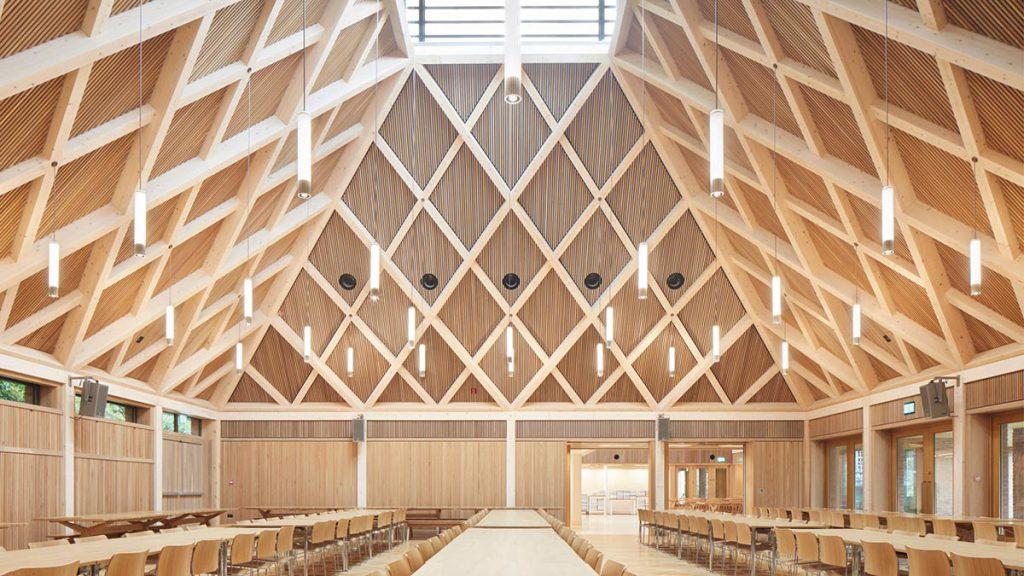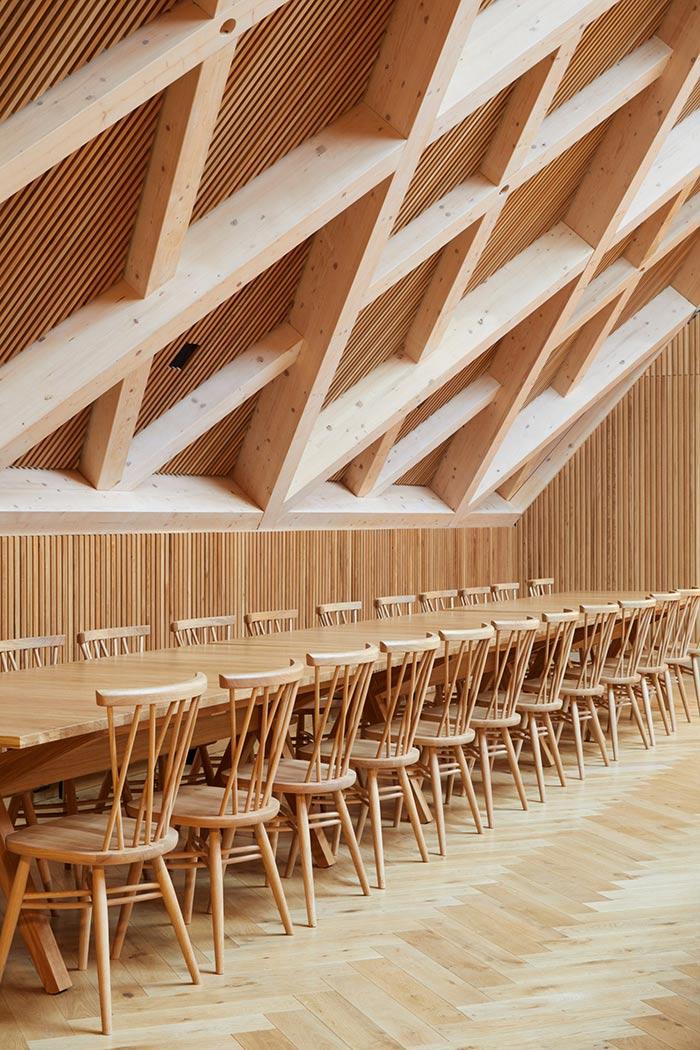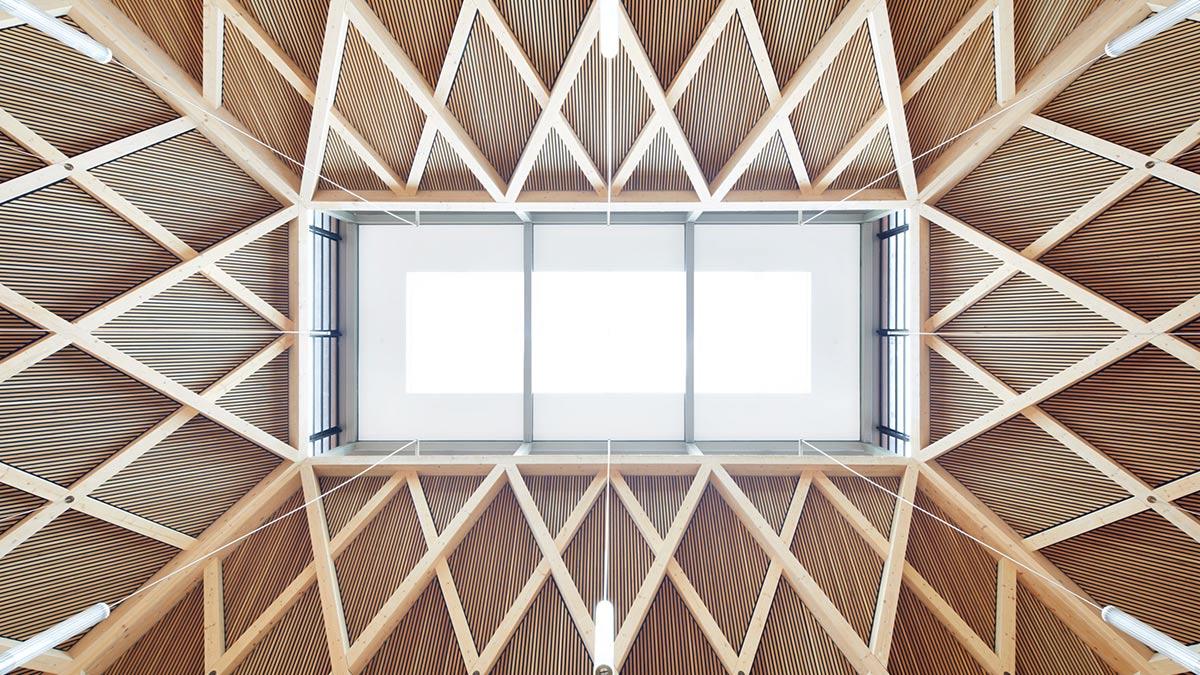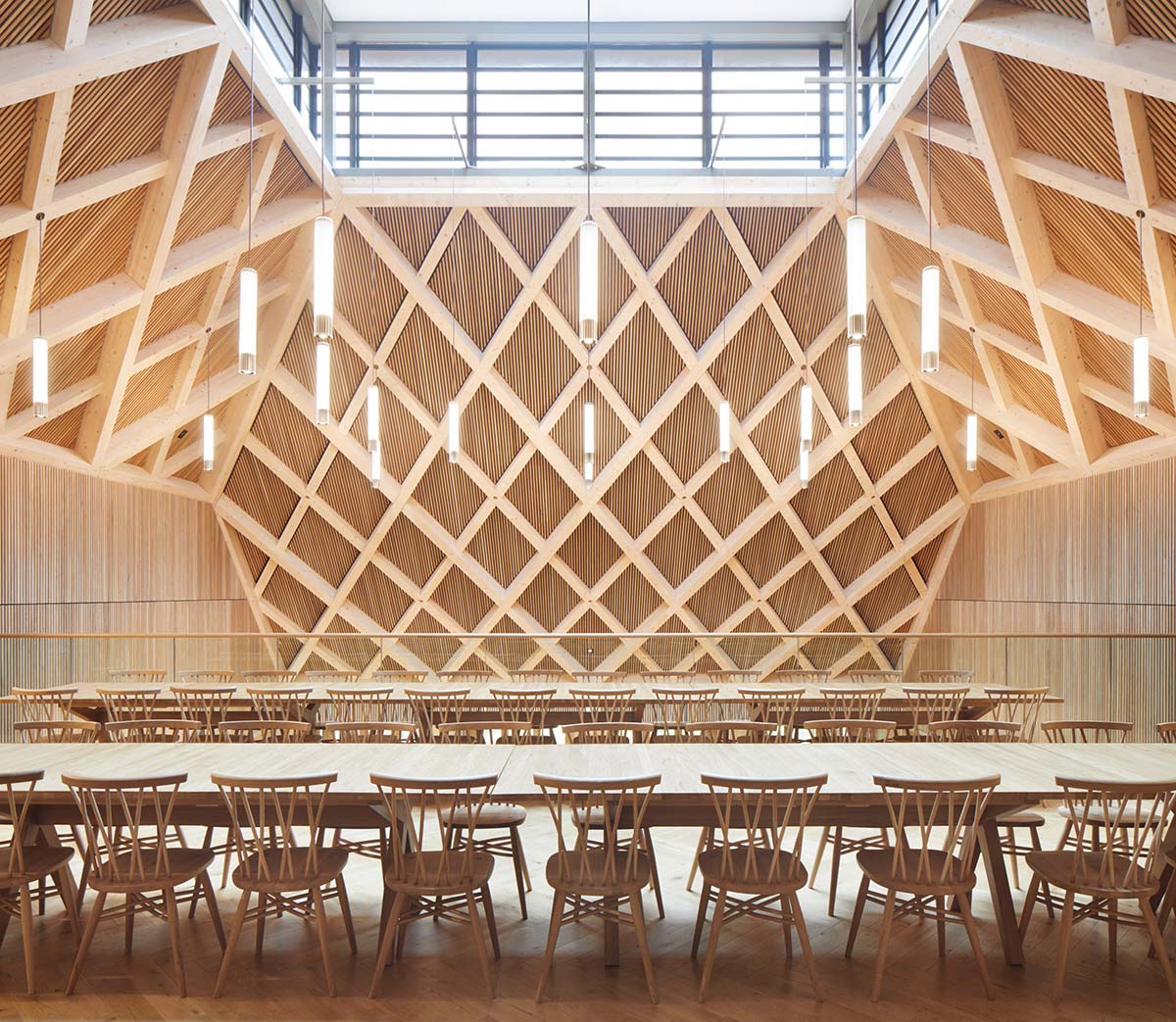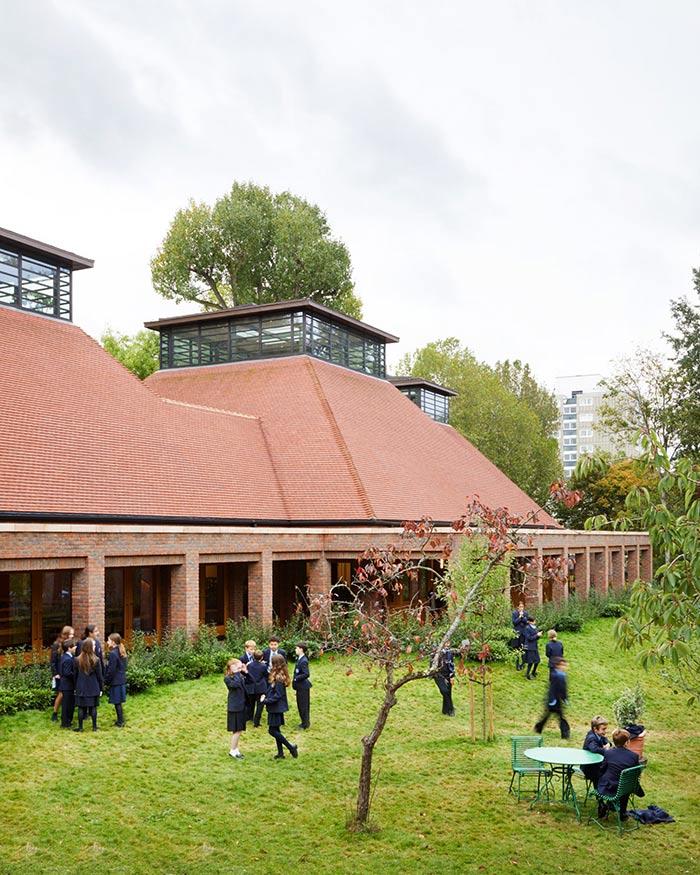When the school bell rings
Its roof looks like three pyramids atop a space of celebratory grandeur, a wooden construction reminiscent of timber-framed buildings. This is precisely what the architects at Maccreanor Lavington had in mind for the new dining hall at Ibstock Place School.
Long, dreary corridors with the same classroom design behind every door. A feeling of tension throughout the building. This kind of scene will be familiar to many from their childhood days. While the vast majority of educational institutions cast their architectural and pedagogical shadow even today, modern architecture in schools is introducing new approaches to everyday life in education. New concepts for content and spatial design are emerging at the interface between teaching and architecture, renegotiated on equal terms by all involved. For architects, clients, pupils and staff alike, the aim is quite clear: the school of tomorrow will be an inspiring place.
Our brief was to create a calm, quiet and enjoyable space.
This view was shared by British architects Maccreanor Lavington when they drew up their design for the new refectory at Ibstock Place School. In the meantime, the trio of structures developed by them have been completed and now form the east-facing edge of the property at this independent school in Roehampton, a district in south-west London. With its brick facade and pyramid-shaped roof, it draws upon its context of the adjoining historic Edwardian main house.
Dining hall with celebratory brilliance
Inside the new ensemble of buildings, there is a feeling of celebration that is usually foreign to this kind of dining hall. The structure of this timber construction extends across the endlessly long rows of tables and reaches an impressive room height of 12 metres. Latticed glulam beams form a vaulted mesh that is decorative while serving a specific purpose. Rectangular glazed lanterns open up the three volumes at the top and bathe the dining tables below in natural daylight.
The architects describe their point of departure for the project: “We recognized the importance of school lunchtimes in supporting the emotional and social development of pupils, and wanted to create a building that is uplifting and celebratory. Our brief was to create a calm, quiet and enjoyable space for its users.”
Wooden panels absorb sound
With over 1,200 pupils who appear here to eat every day when the school bell rings at Ibstock Place School, this is probably easier said than done. To enable them to talk to their neighbours even when the hall is full, the architects used sound-absorbing surfaces. “The striking lattice structure of the vaulted ceilings frames inset panels of oak, designed to incorporate acoustic absorption to soften the background clatter of dining,” the architecture studio explains.
The form of the building is designed to moderate the internal environment without air conditioning.
Thomas Ormerod, architect at Maccreanor Lavington
The restrained material palette also helps to calm the atmosphere. Amid the swathe of different cream-coloured timber surfaces, the architects set individual accents in bronze. Door handles, handrails and light fittings create an upmarket contrast with the monochrome interior. “Our aim was to create a building of timeless quality,” says the architect responsible for the project, Thomas Ormerod.
Sustainable shape and material
The striking shape of the individual volumes not only evokes a certain festiveness, it also serves an important function, as the architects explain: “The form of the building is designed to moderate the internal environment without air conditioning.”
The glazed lanterns on the top of the roof act like a chimney that draws the warm, stale air out of the building via louvre windows. This is a clever, low-tech solution that works with the climate-friendly timber construction to avoid further fuelling the flames of climate change.
Compared to conventional building methods, timber construction projects have many different advantages, as Ormerod emphasizes: “The benefits of using glulam, apart from its beauty, were that the structure could be prefabricated and finished off-site.”
Text: Gertraud Gerst
Translation: Rosemary Bridger-Lippe
Photos: Jack Hobhouse
